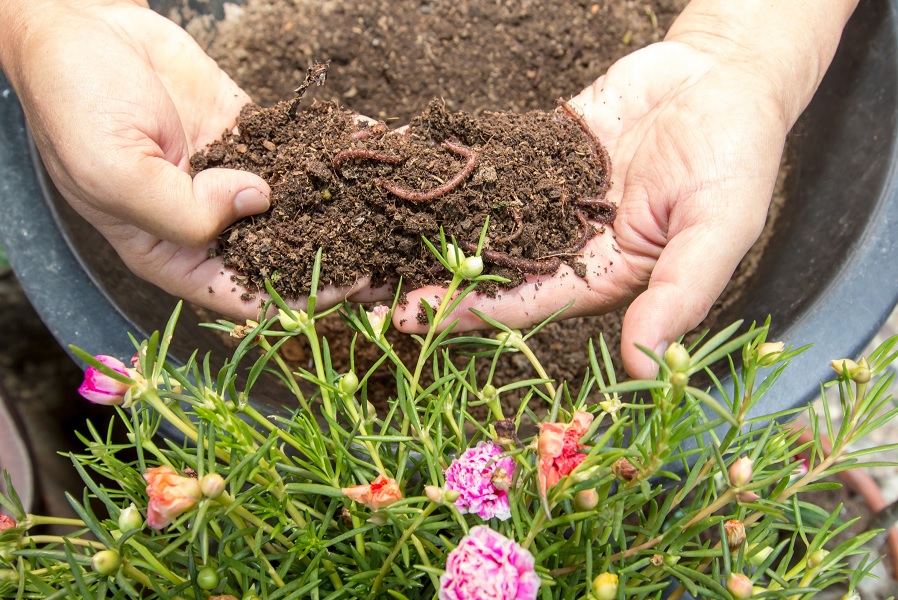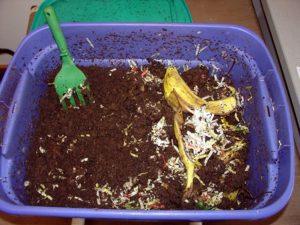Worm composting is a means of changing our food scraps and natural and organic waste materials into a nutritional wealthy fertilizer and focused dirt conditioner. It goes on many titles such as; vermiculture, vermicompost, worm hummus, worm manure, worm castings and vermicast. Worm composting is a satisfying approach to composting that benefits vegetation, lawns, gardens, the environment and US (even the worms enjoy the huge benefits )!!
There are particular worms that being used for worm composting. The very best worms are clinically known as Eisenia foetidaie and Lumbricus rubellus, commonly called Red Wigglers or Red Earthworms. A different type of worm you can use but doesn’t come as strongly suggested, is the Western Night time Crawler (Eisenia hortensis). This worm isn’t as effectual as the Red Wigglers. It’s proficient at recycling coarse fibrous materials like cardboard, but is a lot slower than the Wiggler. Night time Crawlers are better fitted to use as angling bait. Not only can any old worm do.
The procedure of worm composting occurs in a bin in which a healthy environment must be set up for the worms to effectively transform food waste materials and organically grown matter into fertilizer. Proper living conditions must be preserved to guarantee the worms survival and acquire the best quality of fertilizer possible. Not merely if the worms survive, they need to prosper. These conditions include environment control, satisfactory ventilation, sufficient wetness and a multitude of food.
Worms normally convert food waste materials into simple flower nutrition. This natural and organic fertilizer, abundant with phosphorus and nitrogen, is produced considerably faster than most traditional composting methods. When time is of the substance, the worm’s capability to convert food scraps into compost is an extremely valuable feature. This compost is also very concentrated, so that it should be utilized sparingly. Just a little will go quite a distance which makes storage space for in the future quite convenient.
Worm composting can be carried out inside or outside, gives you more options than any other conventional composting methods do. Since worm composting can be carried out indoors, it’s possible to create compost throughout the year. Being limited by the outdoors makes this process to occur within the limitations of the times of year. Also, composting is no more limited to people who have property or backyards. Apartment dwellers may use this technique of composting too. Well, why would a flat dweller even think about composting? They certainly don’t have a backyard or a garden and, in most cases, apartments aren’t always spacious enough to activate within an extra curricular activity such as composting.
There is absolutely no requirement to truly have a yard or a garden with a curiosity about composting. People residing in flats would have houseplants that could reap the benefits of being fertilized. Even those without houseplants may be environmentally mindful and acknowledge the advantages of composting for the pure reason for recycling. So far as getting the space for composting, this technique is self-contained and small. It doesn’t require much space in any way; 8”-16” deep and 1-2 sq. foot. Surface area.
The idea of composting indoors boosts the concern of smell. Worm composting is practically odorless if done properly. To avoid smell, the compost bin should be preserved every week, which is fairly zero-maintenance. Maintenance for smell control is merely not overloading the bin with food, not allowing food to sit down too long, ensuring there is certainly proper air flow and keeping the drain openings in underneath open up and unclogged therefore the bin’s environment doesn’t get too damp.
Worm composting is very reasonable. It is completely possible to utilize this composting method rather than spend a cent, however, purchasing worms is most likely worth eliminating the trouble of actually finding enough of these to really get your compost began. The only other purchase you might opt to make would be the bin used to accommodate your worms, pillows and comforters and compost, however, it isn’t necessary to buy a bin. Actually, besides being cost-effective, it’s globe friendly to employ a container you curently have and recycle it. Essentially, worm composting is recycling.
There is no dependence on any heavy lifting, even though moving in house compost bins outdoors. The weight of the bin will change depending on its size and the quantity of worms it includes, food, compost and pillows and comforters. This can certainly be managed by the quantity of waste transferred in the bin, and constant knowing of its contents. Knowing of its contents will help you to know when the bin has already reached its weight capacity relative to the total amount you’re limited by lifting.
Several benefits are what make it simple for older people and impaired to effectively maintain a compost bin. It’s not only safe for children to take part in worm composting, but it ought to be encouraged. It could make for a great science task as well instill beliefs and instruct lessons about recycling, looking after our world and nurturing vegetation.
Worm composting can help our world heal by reducing the quantity of waste that switches into landfills. Sadly, way too many folks have been conditioned to ‘ toss away’ whatever we don’t use without even offering it another thought. It’s become appropriate. Actually, we’re regarded as a ‘pack rat’ if we don’t be rid of things we aren’t using. This mentality has resulted in the predicament we’re in now-running out of room for our garbage. The simple truth is that so a lot of our ‘garbage’ isn’t even garbage! The old stating that one man’s garbage is another man’s treasure is true…even for desk scraps. If the common home has 3 pounds. of food waste materials weekly, and it’s getting tossed in the garbage, that home is adding 156 pounds. a season to a landfill. Not forgetting 156 pounds. being dragged to the curb, 156 pounds. being raised and tossed by the garbage man, and 156 pounds being hauled to the dump with a gas guzzling pickup truck. In any manner you cut it, it’s only a huge waste materials of energy.
Among the most significant benefactors in worm composting will be the recipients of the fertilizer…the vegetation , the lawns and the landscapes! Houseplants gives back. Being truly a natural air conditioning filter and bringing an area or windows to life, they may be a pleasure to look after. It isn’t unusual to destroy a houseplant when utilizing a liquid fertilizer. It’s likely that that the fertilizer isn’t diluted properly, providing unknown levels of focused fertilizer to the garden soil which may easily surprise and/or burn off the roots. When working with worm compost, it’s applied by sparingly sprinkling it in a slim layer at the top of the garden soil, not coming in contact with the seed stems. Each time you drinking water your plant life, they get a delicacy. The nutrition from the compost is consistently distributed throughout the garden soil and the difference would be that the root base of the seed don’t get burnt or shocked.
The compost can be used as a garden soil conditioner for lawns. For yard application you just scatter the compost within the lawn. Understand that it is targeted and just a little goes quite a distance. Your yard wills many thanks by revealing for the neighbours. Unless your neighbor does a similar thing, the lawn won’t be greener on the other hand.
Your garden will most surely be thanking you in its way, depending on the type of garden it is. Your blossom garden will be revealing right together with your yard. Blooms will be lively, casting a spell on your eye and your nasal area. Nature’s magic. Sunflowers will establish an ego, thinking they can touch sunlight. Morning hours glories will know they will be the glory of the morning hours. Tulips could even believe they have two lip areas and make an effort to kiss you. But significantly, your bouquets will prosper. Your veggie garden will be causing you to salads. Don’t be amazed if your vegetables are bigger, if their pigment is deeper or if indeed they just can’t stop producing edibles! Little do they know they are contributing to another batch of compost.
The Red Wigglers enjoy some benefits too. It’s important to keep in mind that to be able to perform the duty accessible, they’ve been ripped using their environment. Yeah, they’re just worms, however they are performing a very important service and really should be treated respectfully. Their bennies are fairly simple. In trade for their lives, shelter and they get food. They’re certainly well given since food is the primary ingredient because of this kind of composting. Their casing is sufficient indicating proper ventilation, safety from the elements, livable temperature ranges and the wetness they have to survive. To be able to achieve our desired results these conditions must be managed.
Probably the most evident will be the tangible rewards such as delightful salads, nice strawberries, whatever edibles you develop in your garden. Let’s remember herbs you can use to taste many meals and we’ll surely benefit from the lovely bouquet of bouquets on the dining room table that are newly cut from your garden. We can take pleasure in our fulfillment and feel great about the pounds of garbage we didn’t donate to the landfill. We might even experience some satisfaction from setting an example for our kids and our neighbours. It’s an excellent feeling to learn that your time and efforts have paid. You’ve achieved something constructive that improved your daily life and likely improved the lives of others as well. There’s no such thing as too small of the contribution as it pertains to preserving the surroundings that people still have. Whenever we enlist the Red Wigglers to breakdown our food waste materials for us, most of us win!






